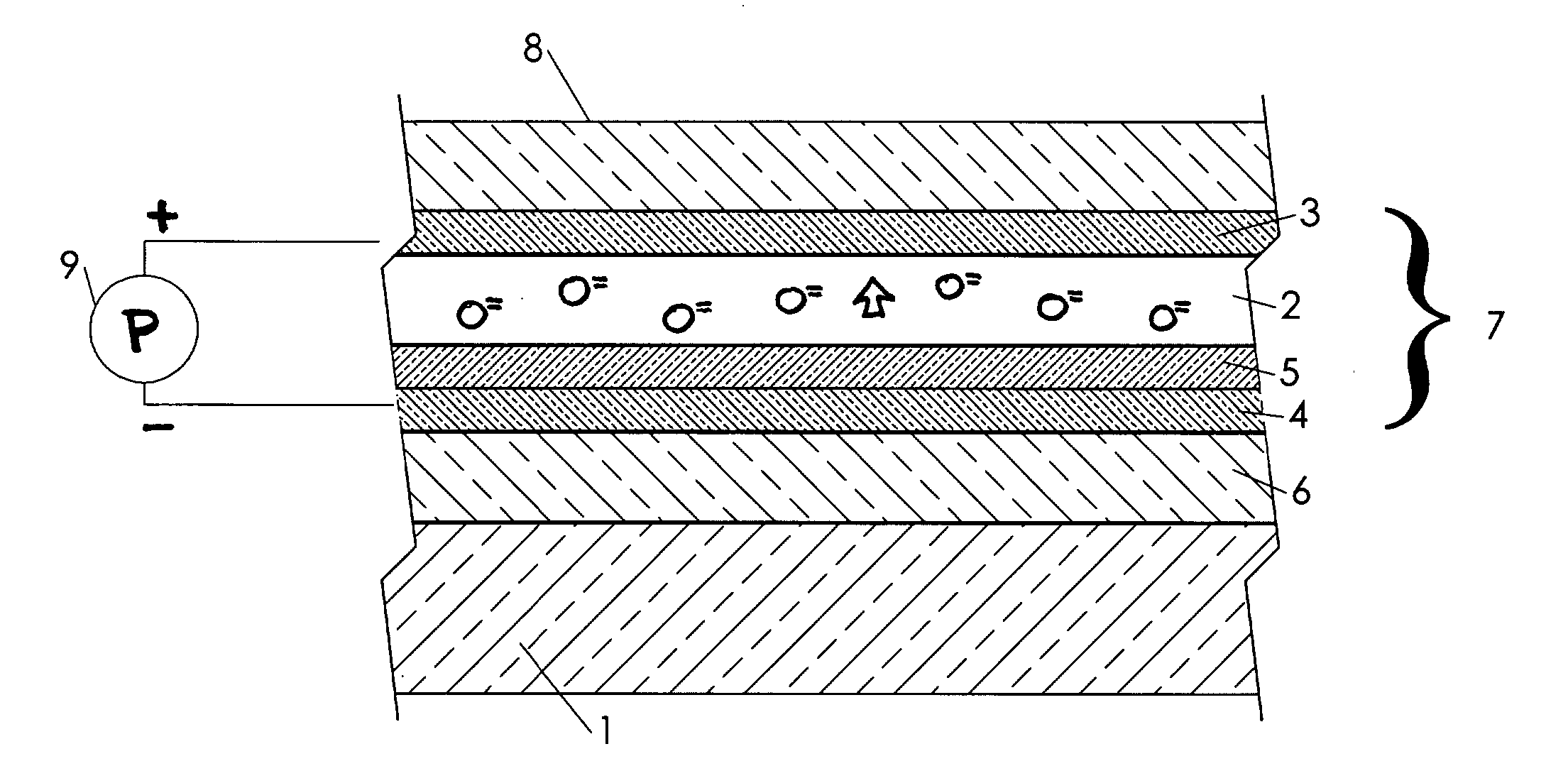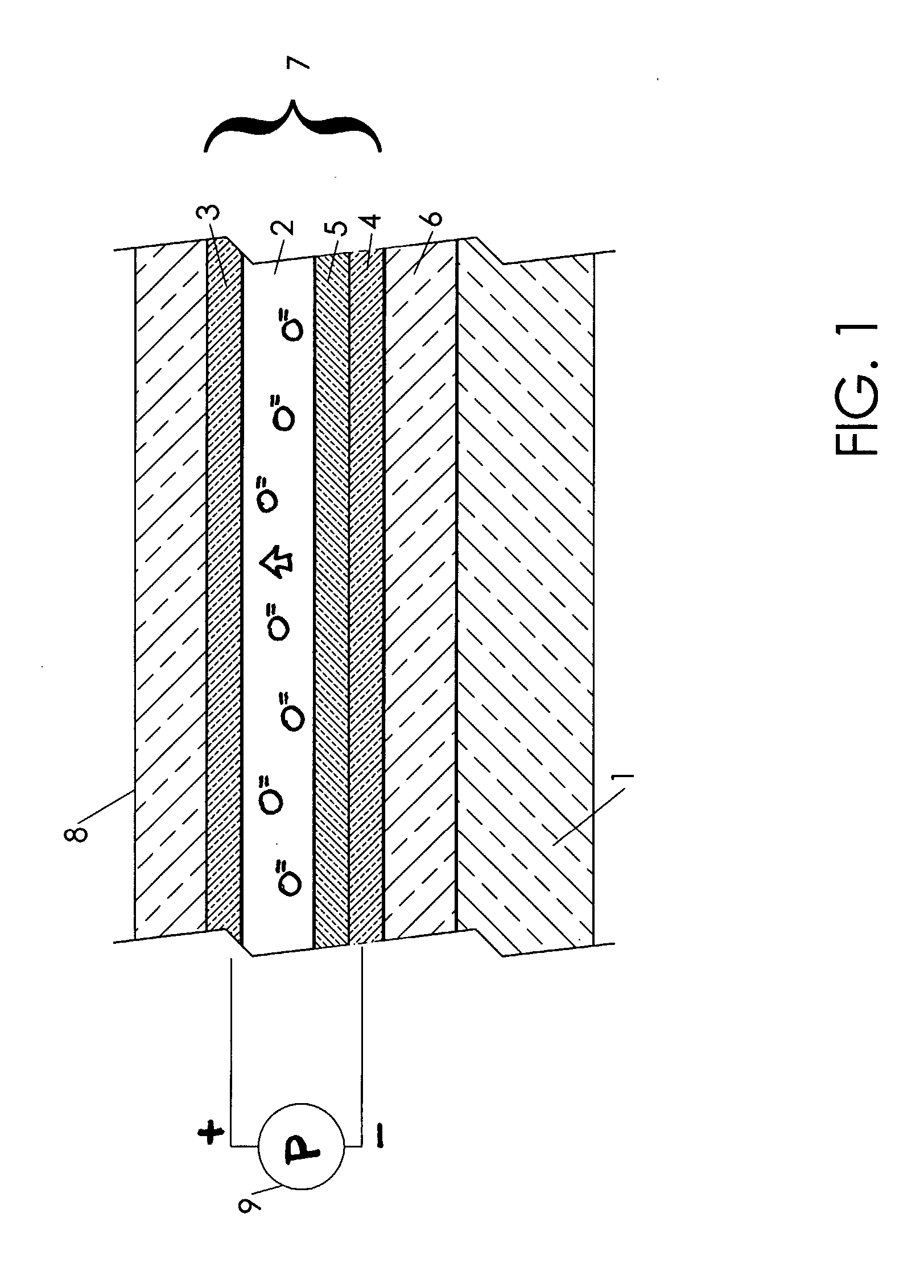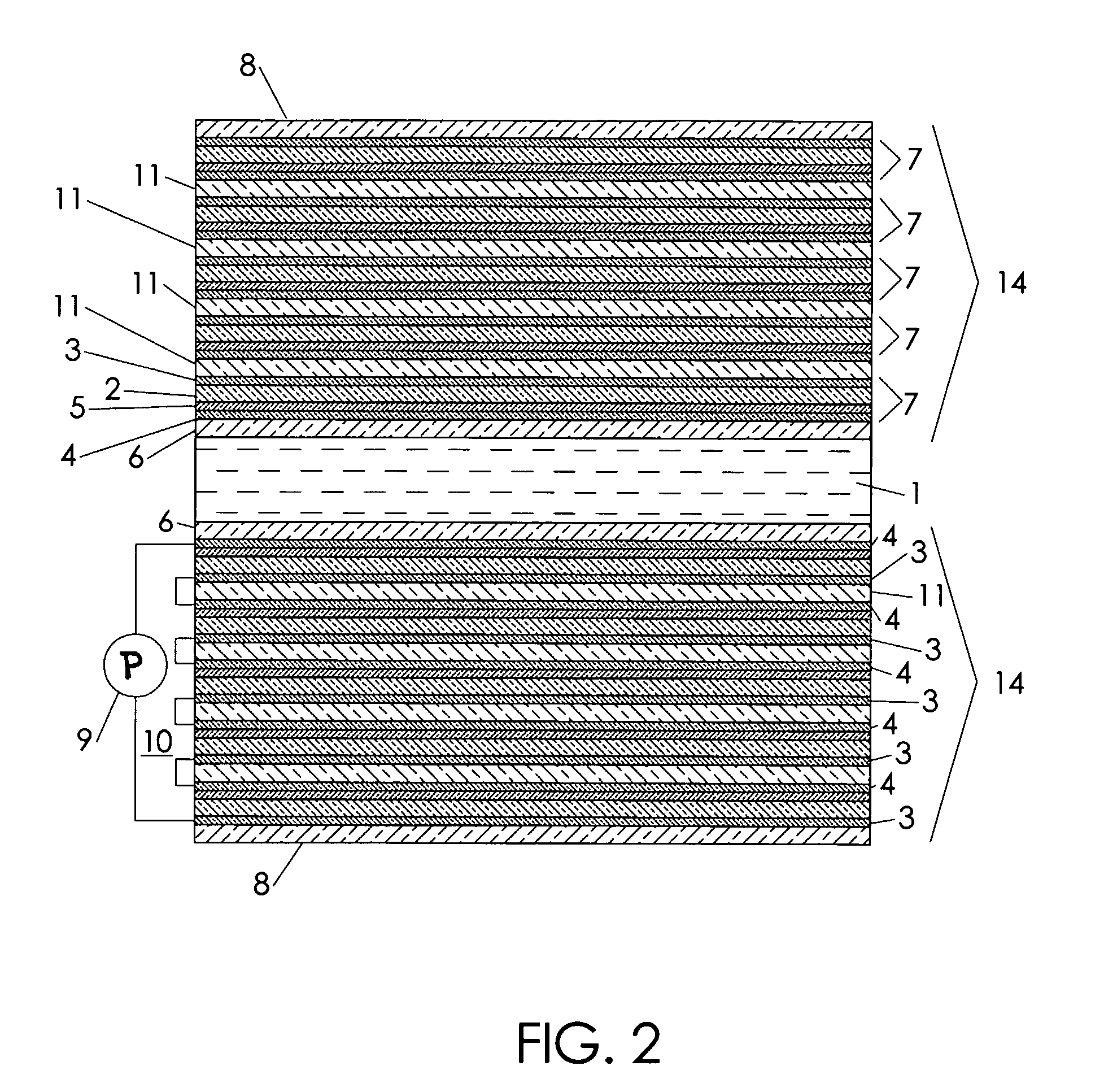Oxygen Transport Structure
a transport structure and oxygen technology, applied in solid-state devices, organic semiconductor devices, inorganic chemistry, etc., can solve the problem that the conductivity of room-temperature oxygen is normally of little use in real-world applications, and achieve the effect of high surface activation
- Summary
- Abstract
- Description
- Claims
- Application Information
AI Technical Summary
Benefits of technology
Problems solved by technology
Method used
Image
Examples
Embodiment Construction
[0052] The following description and FIGS. 1-5 of the drawings depict various embodiments of the present invention. The embodiments set forth herein are provided to convey the scope of the invention to those skilled in the art. While the invention will be described in conjunction with the preferred embodiments, various alternative embodiments to the structures and methods illustrated herein may be employed without departing from the principles of the invention described herein.
[0053]FIG. 1 is a sectional side-view of an electrolytic assembly of the invention. The protected article (1) preferably comprises a material that is substantially permeable to oxygen or moisture, the protected article may comprise a substrate including a component that is sensitive to oxygen or moisture, so that preventing oxygen transport to the protected article is desirable. Accordingly, such oxygen-sensitive components may comprise various types of organic light-emitting materials, thin-film transistor (...
PUM
| Property | Measurement | Unit |
|---|---|---|
| Temperature | aaaaa | aaaaa |
| Electrical conductivity | aaaaa | aaaaa |
| Density | aaaaa | aaaaa |
Abstract
Description
Claims
Application Information
 Login to View More
Login to View More - R&D
- Intellectual Property
- Life Sciences
- Materials
- Tech Scout
- Unparalleled Data Quality
- Higher Quality Content
- 60% Fewer Hallucinations
Browse by: Latest US Patents, China's latest patents, Technical Efficacy Thesaurus, Application Domain, Technology Topic, Popular Technical Reports.
© 2025 PatSnap. All rights reserved.Legal|Privacy policy|Modern Slavery Act Transparency Statement|Sitemap|About US| Contact US: help@patsnap.com



